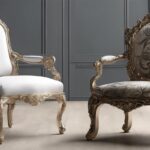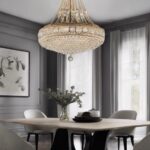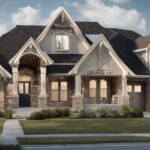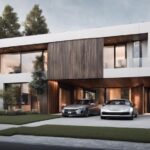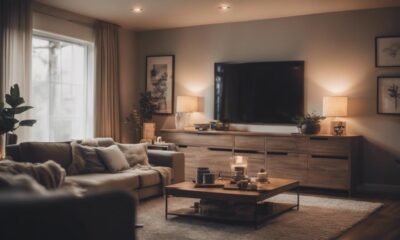Architecture Home Styles
Key Differences Between Modern and Classic Design
Intrigued by the intricate tapestry of design evolution, the distinctions between modern and classic design will captivate your imagination and redefine your perspective.
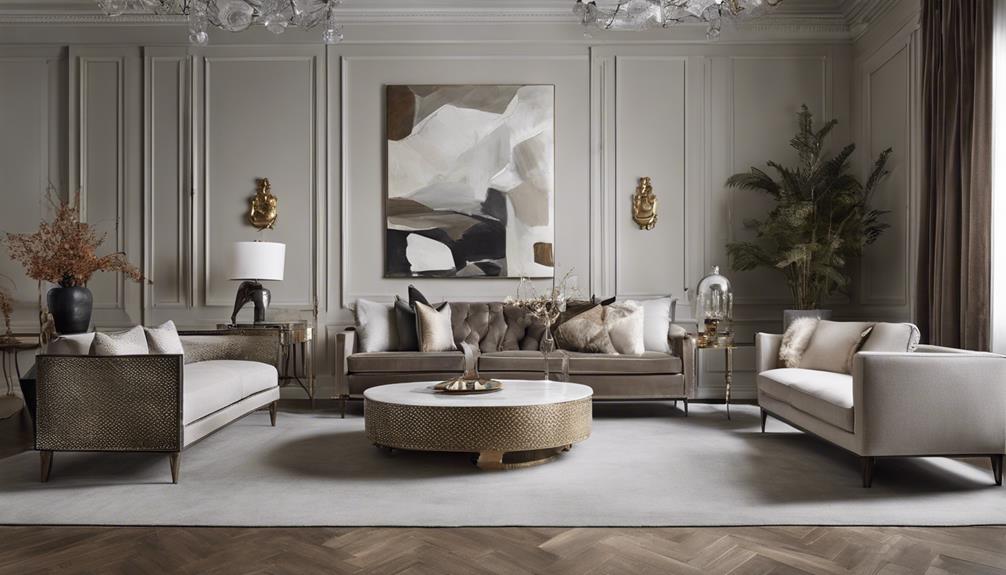
As we take a step back to ponder the intricate tapestry of design evolution, the distinction between modern and classic design becomes increasingly apparent.
The interplay of historical influences on these two design philosophies sets the stage for a captivating exploration of how past eras have shaped our present-day aesthetic preferences.
Intriguingly, the ornamental contrasts, material choices, and functional considerations between modern and classic design offer a window into the diverse worlds of design.
Join us as we unravel the nuanced layers of these distinct design styles and uncover the essence of their individual charm.
Key Takeaways
- Classic design features intricate ornamentation, while modern design embraces minimalism.
- Classic interiors use wood and traditional fabrics, while modern spaces opt for metal and sleek textures.
- Classic design favors rich warm neutrals, while modern design leans towards a neutral color palette.
- Modern design prioritizes functionality and space optimization, while classic design focuses on beauty and ornate details.
Historical Influence on Design Evolution
How have historical architectural styles like Baroque and Gothic influenced the evolution of modern and classic design aesthetics?
Baroque architecture, with its ornate details and grandeur, emerged in response to the simplicity of Renaissance architecture. The dramatic use of light and shadow, intricate detailing, and opulent decoration in Baroque structures continue to inspire contemporary interior design, adding a sense of luxury and sophistication.
On the other hand, Gothic architecture, known for its soaring spires, pointed arches, and ribbed vaults, exudes a sense of verticality and spirituality. The influence of Gothic design can be seen in modern interpretations that emphasize height, light, and a sense of transcendence.
Studying the evolution of historical styles like Baroque and Gothic provides valuable insights into the development of modern and classic design aesthetics. By incorporating elements from these rich architectural traditions, designers can create spaces that blend the past with the present, resulting in a harmonious fusion of old-world charm and contemporary elegance.
Aesthetics and Ornamentation Contrasts
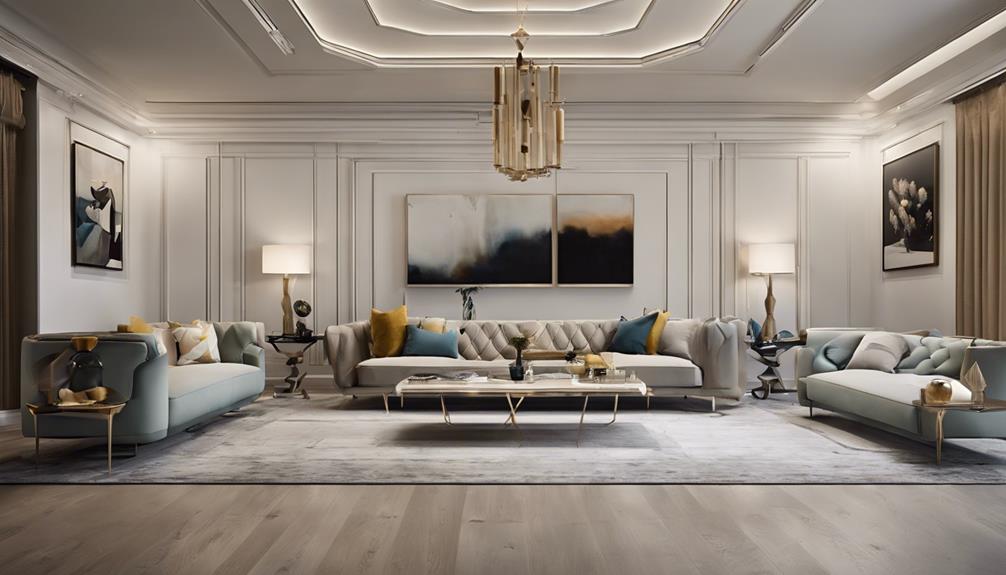
Exploring the contrasting aesthetics and ornamentation between classic and modern design reveals a captivating interplay of ornate details and sleek simplicity. In classic design, intricate decorative elements such as moldings, cornices, and elaborate facades are prominent, exuding a sense of luxury and tradition. These ornamental features add a layer of richness and opulence to interior spaces, reflecting a timeless elegance.
On the other hand, modern design embraces a minimalist approach with clean lines and minimal ornamentation, focusing on simplicity and contemporary style. Modern interiors often feature a neutral color palette and geometric shapes, creating a sleek and uncluttered look that's both sophisticated and functional.
While classic design incorporates rich textures, floral patterns, and traditional decorative elements, modern design opts for modern materials like plastic and metal to achieve a more streamlined aesthetic. The contrast between the two styles highlights the evolution of design preferences towards a more modern and simplistic direction in today's interior design landscape.
Material and Texture Choices
In comparing material and texture choices between classic and modern design, we uncover distinct preferences that shape the overall aesthetic and feel of each style. Classic design often features materials such as wood, stone, and leather, evoking a sense of timelessness and warmth. On the other hand, modern design tends to gravitate towards metal, glass, and plastic, creating a sleek and contemporary look. When it comes to textures, classic design embraces rich and intricate textures like floral patterns and detailed weaves, adding a sense of luxury and ornateness. In contrast, modern design leans towards smooth textures and minimal embellishments, promoting a clean and uncluttered appearance. Additionally, classic design typically includes traditional fabrics and finishes, while modern design opts for innovative textures and finishes that push the boundaries of conventional design.
| Classic Design | Modern Design |
|---|---|
| Wood | Metal |
| Floral Patterns | Smooth Textures |
| Traditional Fabrics | Innovative Textures |
Color Palette Preferences
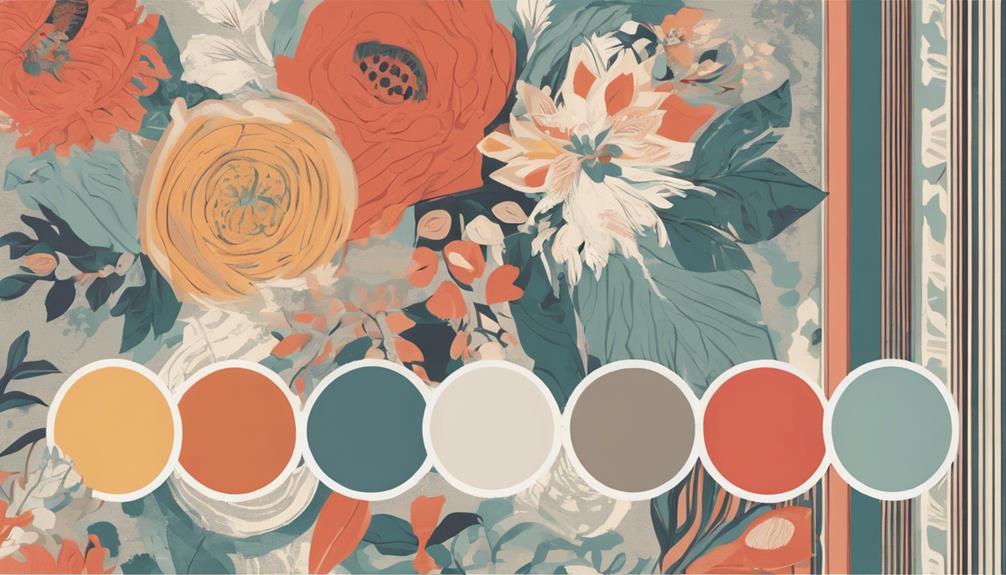
When it comes to color palette preferences, both classic and modern design exhibit distinct choices that define their unique styles and atmospheres.
In classic design, a preference for rich warm neutrals like deep greens, navy, and walnut wood tones creates a sense of traditional elegance. Classic style incorporates warm brick and rust tones to add depth and richness to the color schemes, whereas modern interiors opt for natural tones and base neutrals to maintain a clean and uncluttered aesthetic.
On the other hand, modern design leans towards a neutral color palette featuring sharp black contrasts and creamy beige furnishings, highlighting a sleek and minimalist look. Additionally, black accents are commonly used in modern design to create striking contrast, while classic design relies on a mix of rich, warm colors to evoke a sense of warmth and sophistication.
These contrasting color palette preferences emphasize the unique characteristics of both modern and classic design styles.
Functional Considerations in Design
Considering functionality as a core principle, modern design meticulously integrates clean lines and minimalistic furniture arrangements to optimize space and usability. Modern interior design often incorporates multifunctional furniture pieces that serve dual purposes, such as storage beds or coffee tables with hidden compartments. On the other hand, classic style still retains its focus on intricate details and ornate furniture, which may sacrifice functionality for aesthetics.
| Modern Design Style | Classic Interior |
|---|---|
| Clean lines | Ornate details |
| Minimalistic furniture | Intricate pieces |
| Multifunctional items | Aesthetic appeal |
| Space optimization | Emphasis on design |
Modern home interiors prioritize simplicity and ease of use, reflecting a more practical approach to design. In contrast, classic homes often showcase furniture and decor choices that prioritize beauty over practicality. When it comes to interior designs, architectural style plays a crucial role in determining the balance between functional considerations and aesthetic preferences in both modern and classic design approaches.
Frequently Asked Questions
What Is the Difference Between Modern and Traditional Design?
When comparing modern and traditional design, we see a clear distinction in their approaches. Modern design leans towards simplicity and functionality, while traditional design embodies timeless elegance and intricate details.
The use of rich materials characterizes traditional design, whereas modern design opts for a neutral color palette and minimalist aesthetic. These differences in style and philosophy contribute to the unique charm and appeal of each design approach.
What Is the Difference Between Modern and Classic House Design?
When comparing modern and classic house design, we notice distinct contrasts in style, functionality, and aesthetic appeal.
Modern design embraces clean lines and simplicity, emphasizing minimalism and functionality.
In contrast, classic design exudes elegance, tradition, and warmth through ornate details and traditional materials.
Each style offers a unique charm and caters to different preferences, making the choice between them a matter of personal taste and lifestyle needs.
What Is the Difference Between Classical and Contemporary Design?
When it comes to classical and contemporary design, one captivating aspect is the clash of tradition and innovation.
Classical design exudes elegance with rich tones and intricate details, while contemporary design embraces sleek lines and minimalism.
This dynamic contrast between the past and present in design choices creates a visually stimulating environment that appeals to those seeking a blend of timeless sophistication and modern functionality.
What Is the Difference Between Classic and Traditional Design?
In classic and traditional design, we notice key distinctions. Classic design embodies elegance, symmetry, and modern touches.
On the other hand, traditional design focuses on a cozy, heritage-filled aesthetic with ornate details.
Classic design leans towards unique living experiences while traditional design revolves around traditional materials.
Both styles offer their own charm, appealing to different tastes and preferences.
Conclusion
After exploring the key differences between modern and classic design, it's clear that each style offers a unique aesthetic and atmosphere.
While classic design exudes elegance and tradition, modern design presents a sleek and minimalist approach.
However, the truth is that design is constantly evolving, and there are no strict rules when it comes to creating a beautiful and functional space.
So, feel free to mix elements from both styles to create a personalized and eclectic look that truly reflects your own taste and personality.
- About the Author
- Latest Posts
Introducing Ron, the home decor aficionado at ByRetreat, whose passion for creating beautiful and inviting spaces is at the heart of his work. With his deep knowledge of home decor and his innate sense of style, Ron brings a wealth of expertise and a keen eye for detail to the ByRetreat team.
Ron’s love for home decor goes beyond aesthetics; he understands that our surroundings play a significant role in our overall well-being and productivity. With this in mind, Ron is dedicated to transforming remote workspaces into havens of comfort, functionality, and beauty.
Architecture Home Styles
5 Reasons Why Modular Homes Lose Value Faster
Hoping to understand why modular homes depreciate faster? Discover the surprising reasons behind their quicker value loss in this insightful article.
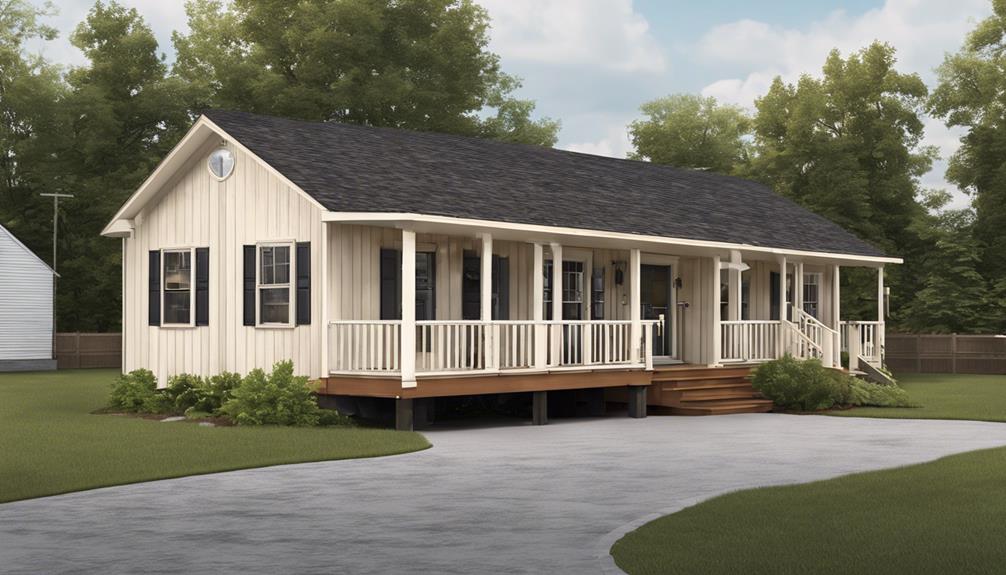
Have you ever wondered why modular homes seem to lose their value quicker than traditional homes?
The reasons behind this phenomenon might surprise you. From limited customization options to potential wear and tear issues, there are several factors at play that contribute to the faster depreciation of modular homes.
Let's explore these aspects in more detail and uncover why modular homes may not hold their value as well as their stick-built counterparts.
Key Takeaways
- Limited customization leads to generic designs, impacting value.
- Depreciation risks from factory construction compromises quality.
- Wear and tear concerns due to transportation and assembly challenges.
- Market perception challenges affect resale value and competitiveness.
Limited Customization Options
Limited customization options in modular homes can often restrict buyers seeking unique and personalized designs due to the standardized nature of modular construction. Unlike traditional stick-built homes, where almost any design preference can be accommodated, modular homes typically offer set floor plans with limited room for alterations. This can be frustrating for individuals looking to incorporate specific features or styles that deviate from the standard offerings.
While some basic customization choices like paint colors or flooring options may be available, more intricate requests such as all-glass rotundas or intricate log-cabin styles may prove challenging to achieve within the constraints of modular construction. The inability to fully customize individual modular pieces can result in a lack of uniqueness and personal flair in the final design of the home.
For buyers with highly specific and detailed customization requirements, the limited options in modular homes may not align with their vision for a dream home. This lack of flexibility can be a significant drawback for those seeking a truly one-of-a-kind living space.
Depreciation Due to Factory Construction
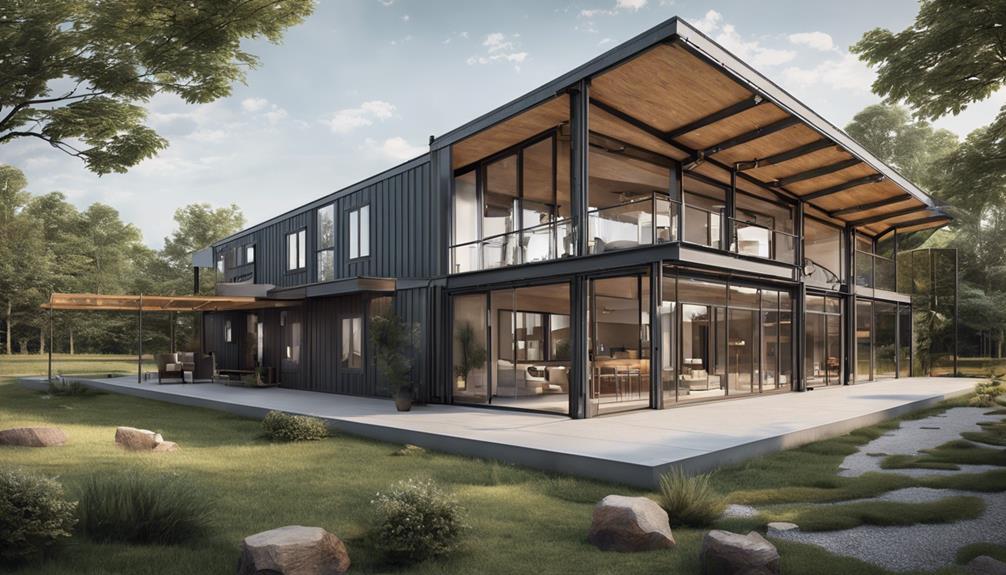
Factory construction processes in modular homes can contribute to accelerated depreciation, impacting the long-term value of these properties. The efficiency of factory construction can sometimes lead to shortcuts or compromises in the quality of materials and craftsmanship. This can result in components that may not withstand the test of time as well as those in traditional stick-built homes.
Factors such as transportation and handling during the factory construction phase can also play a role in the depreciation of modular homes. The controlled environment of a factory may not always replicate the conditions a home will face once placed on-site, potentially leading to premature wear and tear.
Understanding the nuances of how factory construction impacts depreciation is crucial for homeowners and investors alike. By recognizing the specific challenges posed by factory construction, individuals can make more informed decisions regarding the long-term value and upkeep of modular homes.
Potential Wear and Tear Issues
Potential wear and tear issues in modular homes can significantly impact their long-term value and structural integrity. When considering real estate investments, it's crucial to be aware of the following potential wear and tear issues that modular homes may face:
- Transportation Challenges: The process of moving modular home sections to the construction site can cause vibrations and structural stress, leading to potential weaknesses over time.
- Assembly Risks: Improper handling during the assembly of modular homes can result in misalignments or structural issues, affecting the overall stability of the property.
- Component Deterioration: Wear on essential components such as roofs, walls, and floors can accelerate depreciation and impact the aesthetic appeal and functionality of the modular home.
- Maintenance Neglect: Inadequate maintenance practices or delayed repairs can exacerbate wear and tear issues, reducing the lifespan and value of modular homes compared to stick-built homes.
To maintain the value of modular homes in the real estate market, proactive measures like regular inspections and timely repairs are essential to address wear and tear concerns effectively.
Perception of Lower Quality

Buyers sometimes overlook the true quality of modular homes due to misconceptions about their construction process, impacting their perceived value in the real estate market. It's essential to understand that modular homes can offer higher quality construction and numerous advantages compared to traditional stick-built homes. Let's break down the pros and cons in a structured manner:
| Pros | Cons | |
|---|---|---|
| Built in a controlled environment | Perceived as lower quality | |
| Energy-efficient | Bias in the real estate market | |
| Durable | Challenges in resale value | |
| Quick construction time | Outdated perceptions | |
| Design flexibility |
Despite the misconceptions, modular homes are often built to the same, if not higher, standards as traditional homes. Educating buyers about the benefits and quality of modular homes can help shift the market's perception and ultimately improve their value in the real estate market.
Market Perception and Resale Challenges
Despite the advancements in quality and construction standards of modular homes, the market perception and lingering misconceptions present significant challenges when it comes to their resale value. When considering the resale market for modular homes, several key factors contribute to the difficulties they face:
- Stigma and Misconceptions: Lingering misconceptions surrounding modular homes compared to traditional stick-built houses can deter potential buyers, impacting the resale value.
- Buyer Preferences: Despite comparable appraised values, some buyers still prefer stick-built homes, affecting the demand for modular homes in the resale market.
- Public Perception Impact: The overall public perception of modular homes can influence the speed at which they lose value, making it crucial to address misconceptions.
- Educational Support: Collaborating with knowledgeable real estate agents can help educate buyers, alleviate concerns, and potentially enhance the resale prospects of modular homes.
Addressing market perception challenges and resale obstacles is vital to ensuring the sustained value and market competitiveness of modular homes.
Frequently Asked Questions
Why Do Modular Homes Lose Value?
When examining why modular homes lose value, one must consider factors like limited customization, perceived lower quality, and buyer preferences for stick-built homes. These aspects influence resale value and demand.
Misconceptions about durability and market conditions also play a role. Location, trends, and overall condition further impact the quicker depreciation of modular homes.
Understanding these dynamics is crucial for assessing the fluctuating value of modular properties.
What Is the Downfall of a Modular Home?
The downfall of a modular home lies in its limited customization options, potential financing challenges, and quality concerns during construction. These factors can impact resale value negatively and contribute to a faster depreciation rate compared to traditional homes.
Despite their efficiency in assembly, modular homes may face stigma as inferior to stick-built houses, further affecting their perceived value in the real estate market.
Do Modular Homes Depreciate Fast?
Yes, modular homes can depreciate quickly due to limited customization options, outdated designs, location factors, poor maintenance, and market fluctuations.
These various factors contribute to the faster depreciation rate of modular homes compared to traditional homes.
It's essential to consider these aspects when evaluating the potential depreciation of a modular home and make informed decisions to mitigate such risks.
Why Do Manufactured Homes Depreciate?
Manufactured homes depreciate faster due to lower quality materials and limited customization options. Perception of lower value compared to stick-built homes contributes to rapid depreciation rates. Stigma associated with manufactured homes impacts resale value.
Factors like land location, age of the home, and market demand also play a role in faster depreciation. These elements combine to create a scenario where manufactured homes lose value quicker than traditional homes.
Conclusion
In conclusion, modular homes may lose value faster than traditional homes due to:
- Limited customization options
- Potential wear and tear issues
- The perception of lower quality
Interestingly, a study by the National Association of Home Builders found that modular homes can depreciate up to 9% more than stick-built homes over time. This statistic highlights the impact of construction methods on the resale value of homes and the importance of considering all factors when investing in real estate.
- About the Author
- Latest Posts
Introducing Ron, the home decor aficionado at ByRetreat, whose passion for creating beautiful and inviting spaces is at the heart of his work. With his deep knowledge of home decor and his innate sense of style, Ron brings a wealth of expertise and a keen eye for detail to the ByRetreat team.
Ron’s love for home decor goes beyond aesthetics; he understands that our surroundings play a significant role in our overall well-being and productivity. With this in mind, Ron is dedicated to transforming remote workspaces into havens of comfort, functionality, and beauty.
Architecture Home Styles
The Battle of Traditional Versus Modern Homes
Lose yourself in the clash between traditional and modern homes – discover the surprising twists that shape our living spaces.

Let's step into the realm of architecture where the clash between traditional and modern homes runs deep. The debate over which style reigns supreme has sparked countless discussions and decisions among homeowners and designers alike.
As we explore the nuances of each approach, the considerations extend beyond mere aesthetics, delving into functionality, sustainability, and the very essence of what makes a house a home.
Uncover the intricacies of this ongoing battle and discover what truly sets these two design philosophies apart in shaping our living spaces.
Key Takeaways
- Modern homes emphasize simplicity and functionality, while traditional homes highlight historical elements and intricate details.
- Market trends favor modern homes for sleek design and eco-friendly features, while traditional homes appeal to nostalgia and architectural details.
- Technology integration enhances convenience in modern homes, while traditional homes adopt retrofitted smart devices and energy-efficient upgrades.
- Lifestyle preferences show a shift towards modern homes with open floor plans and multifunctional spaces, while traditional homes offer classic designs and separate rooms.
Key Differences in Architectural Styles
When comparing traditional and modern architectural styles, the choice of materials and design elements plays a pivotal role in distinguishing between the two.
Traditional architecture often incorporates brick or stone materials, exuding a sense of history and permanence, while modern architecture tends to gravitate towards sleek glass and steel for a more contemporary feel.
In terms of design, traditional homes typically feature dark wood and heavy furniture, creating a cozy and classic ambiance, in stark contrast to the clean lines and simple furniture found in modern homes.
Moreover, modern homes embrace bold colors to make a statement, while traditional homes opt for earthy tones for a more subdued elegance.
The focus of modern design is on simplicity and functionality, aiming to balance artistry with practicality, whereas traditional design leans towards historical elements and intricate details, emphasizing symmetry and proportion.
Interior Design Contrasts

In exploring the interior design contrasts between traditional and modern homes, one can observe distinct choices in textiles, color schemes, and spatial layouts that define the unique ambiance of each architectural style. When comparing traditional and modern interior design, several key differences emerge:
- Textiles and Color Schemes: Traditional homes feature rich textiles and warm color schemes, creating a cozy atmosphere, while modern homes emphasize a natural color palette and minimalist decor for a clean and sleek look.
- Spatial Layouts: Traditional homes often have defined living spaces with practical layouts, whereas modern houses prioritize open-plan living for a spacious feel.
- Kitchen Design: Traditional kitchens showcase ornate cabinetry and traditional materials, while modern kitchens feature sleek appliances and streamlined designs.
- Wall Colors: Traditional homes may have more varied colors on the walls, while modern homes often favor white walls for a contemporary feel.
- Natural Light: Modern design prioritizes natural light, utilizing large windows and open spaces to create a bright and airy environment.
Impact of Technology on Homes
The integration of technology into homes has fundamentally transformed the way we interact with our living spaces, revolutionizing functionality and convenience. In modern homes, smart features like automated lighting, thermostats, and security systems have become commonplace, offering residents seamless control over their environment.
Traditional homes are catching up by incorporating retrofitted smart devices and energy-efficient upgrades, bridging the gap between the past and the future. Both traditional and modern homes benefit from home automation, enabling remote management of various systems for enhanced convenience and security.
Energy monitoring systems play a crucial role in reducing utility costs and promoting sustainable living practices in modern homes, aligning with the increasing focus on eco-conscious solutions. The drive for convenience, security, and energy conservation propels the adoption of technology in homes, blurring the lines between traditional values and modern advancements.
As technology continues to evolve, the distinction between traditional and modern homes becomes less defined, offering a blend of comfort and efficiency for residents seeking liberation in their living spaces.
Lifestyle Considerations

Considering lifestyle preferences and daily needs is paramount when deciding between traditional and modern homes. Both traditional and modern designs offer unique advantages that cater to different lifestyles. Here are some key elements to consider:
- Architectural Styles: Traditional homes often feature classic designs like Colonial or Victorian, while modern homes showcase sleek lines and open floor plans.
- Living Spaces: Traditional homes may have more defined rooms and formal areas, whereas modern homes focus on open layouts for a more connected feel.
- Building Materials: Traditional homes commonly use wood and brick for a timeless appeal, while modern homes incorporate steel and glass for a contemporary look.
- Paint Colors: Traditional homes typically embrace warm, muted tones for a cozy atmosphere, while modern homes often feature crisp, neutral palettes for a clean aesthetic.
- Floor Plans: Traditional homes usually have separate rooms for specific functions, while modern homes prioritize multifunctional spaces that promote flexibility and creativity.
Considering these factors will help determine which style aligns best with your lifestyle and preferences.
Market Trends and Preferences
Market trends showcase a clear preference shift towards modern homes, driven by their sleek design and functional layouts, while traditional homes maintain their allure for buyers seeking charm and historical significance.
Modern homes are gaining popularity, especially among younger buyers, for their contemporary aesthetic and innovative design elements. The use of modern materials and eco-friendly features such as energy-efficient systems appeals to those looking for sustainable living options.
On the other hand, traditional homes continue to attract buyers interested in the unique architectural details and sense of nostalgia they offer. The demand for modern homes with advanced technology and open floor plans is on the rise, reflecting a shift towards a more streamlined and efficient lifestyle.
Despite this trend, traditional homes hold their ground with their timeless charm and historical significance, catering to those who value a connection to the past and a sense of heritage in their living spaces.
Frequently Asked Questions
What Is the Difference Between a Traditional House and a Modern House?
When comparing a traditional house to a modern one, the key distinctions lie in their architectural features and design elements. Traditional homes tend to emphasize symmetry, classical designs, and dark colors, while modern houses prioritize open-plan living spaces, clean lines, and minimalist aesthetics.
The contrast between the two styles can be seen in their use of materials, layout, and overall approach to design, catering to different preferences and lifestyles.
What Is the Difference Between Modern and Traditional Style?
When comparing modern and traditional styles, the key differences lie in their design principles.
Modern style emphasizes sleek lines, minimalism, and open spaces, while traditional style focuses on symmetry, ornate details, and classical elements.
Modern homes often feature bold colors and simple furniture, creating a contemporary look. In contrast, traditional homes use earthy tones and heavy, dark wood furniture for a warm and inviting atmosphere.
The clash between these contrasting styles offers a visual spectacle of design evolution.
What Is the Difference Between Traditional and Modern Architecture?
When comparing traditional and modern architecture, we notice distinct differences in design elements and materials used. Traditional architecture typically incorporates historical traits and cultural influences, resulting in styles like Victorian, Colonial, and Neoclassical.
In contrast, modern architecture focuses on minimalistic design with industrial materials such as steel and concrete. These differences in style lead to unique aesthetics and functionality in both traditional and modern buildings.
What Is the Difference Between Past and Present House?
In the past, houses often reflected simpler living with smaller rooms and distinct functions. Present-day houses tend to emphasize open layouts, integrating living spaces for a more connected feel.
The shift from compartmentalized rooms to multifunctional areas characterizes modern homes. Advancements in technology also play a significant role in distinguishing past and present houses, as smart home systems and energy-efficient features are now common in contemporary dwellings.
Conclusion
In conclusion, the battle between traditional and modern homes is like a clash of time periods within the walls of a house.
While traditional homes transport us back to a bygone era with their intricate details and cozy charm, modern homes propel us into the future with their clean lines and innovative designs.
Ultimately, the choice between the two styles comes down to personal preferences and the desired ambiance one wishes to create within their living space.
- About the Author
- Latest Posts
Introducing Ron, the home decor aficionado at ByRetreat, whose passion for creating beautiful and inviting spaces is at the heart of his work. With his deep knowledge of home decor and his innate sense of style, Ron brings a wealth of expertise and a keen eye for detail to the ByRetreat team.
Ron’s love for home decor goes beyond aesthetics; he understands that our surroundings play a significant role in our overall well-being and productivity. With this in mind, Ron is dedicated to transforming remote workspaces into havens of comfort, functionality, and beauty.
Architecture Home Styles
How Often Should You Replace Roof Shingles?
Meticulously determining the ideal timing for roof shingle replacement could be the key to saving you from unexpected expenses – intrigued?

As homeowners, we often find ourselves pondering a crucial question: how often should we replace roof shingles?
The answer may not be as straightforward as we'd like, given the multitude of factors influencing the lifespan of our roof covering.
Before you dismiss this as just another mundane topic, consider this – understanding the optimal timing for roof shingle replacement could potentially save you from costly repairs and ensure the longevity of your roof.
Let's explore this further.
Key Takeaways
- Asphalt shingles last 15-30 years based on quality and maintenance.
- Signs like missing, cracked, or curled shingles indicate replacement needs.
- Weather impacts like heat, rain, and wind affect shingle lifespan.
- Proper budgeting for material, installation, and labor ensures a smooth replacement process.
Factors Influencing Roof Shingle Lifespan
Factors such as climate exposure, installation quality, and maintenance practices play a crucial role in determining the lifespan of roof shingles. The type of roofing material used is a significant factor in how well shingles withstand varying weather conditions. For instance, asphalt shingles, one of the most common roofing materials, typically last between 15-30 years. However, in areas with extreme weather patterns, such as constant exposure to high UV rays or heavy snowfall, the lifespan may be at the lower end of that range.
Proper installation is equally vital. Even the highest quality shingles can fail prematurely if not installed correctly. Issues like poor ventilation, improper nailing techniques, or inadequate sealing can lead to shingle damage and a shortened lifespan. It's essential to hire experienced professionals to ensure the installation is done correctly from the start.
Recommended Frequency for Roof Shingle Replacement
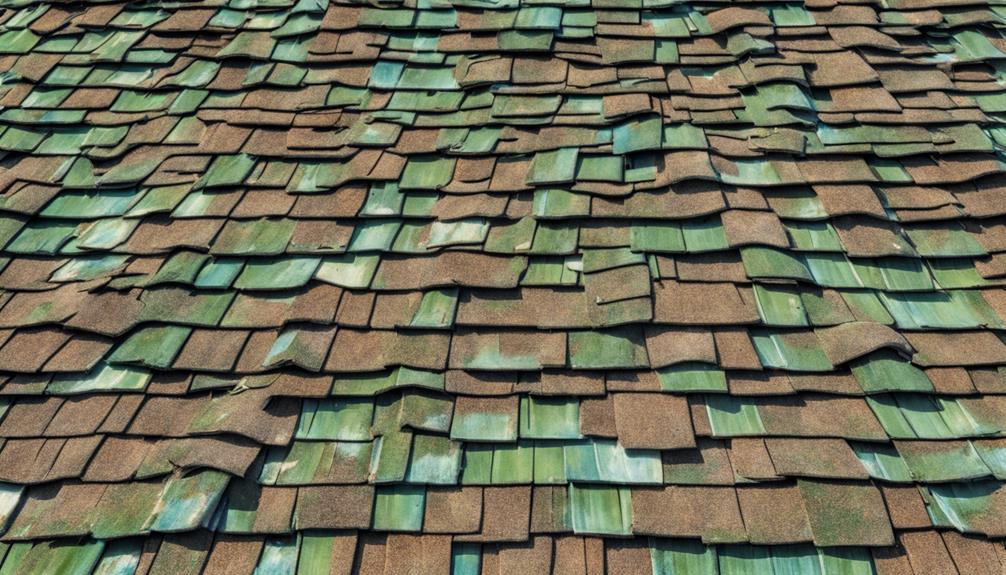
To ensure the longevity and structural integrity of your roof, it's crucial to understand the recommended frequency for roof shingle replacement. Asphalt shingles, commonly used in roofing, typically have a lifespan of 15-30 years. However, this timeline can vary based on several factors such as the quality of the shingles, level of maintenance, and the climate in which your home is located.
Factors like UV exposure, extreme temperatures, and storm damage can expedite the deterioration of asphalt shingles, necessitating earlier replacement. Proper ventilation and correct installation are vital in prolonging the lifespan of your shingles before replacement is needed.
Regular inspections to identify signs of wear and tear on the shingles are essential in determining when replacement is necessary. Timely replacement of worn-out or damaged roof shingles can prevent potential leaks, water damage, and structural issues in your home, ensuring your roof remains a protective barrier for years to come.
Signs Indicating Roof Shingle Replacement
When assessing the condition of your roof, keep an eye out for common signs such as missing, cracked, or curling shingles that may indicate the need for replacement. Damaged or deteriorating shingles can lead to leaks, compromising the roof's integrity and necessitating timely replacement. Additionally, if your roof is over 15-30 years old, especially with asphalt shingles, it's likely time for a replacement. Increased energy bills or water stains on ceilings can also signal roof shingle issues and the need for replacement. Regular inspections are key to identifying early signs of shingle damage, allowing for proactive replacement and maintenance. To help you understand better, here is a table detailing common signs that may indicate the need for roof shingle replacement:
| Signs | Indication |
|---|---|
| Missing shingles | Vulnerability to leaks and weather damage |
| Cracked shingles | Reduced protection and potential water ingress |
| Curling shingles | Decreased efficiency and wear on the roof |
Impact of Weather on Roof Shingle Longevity
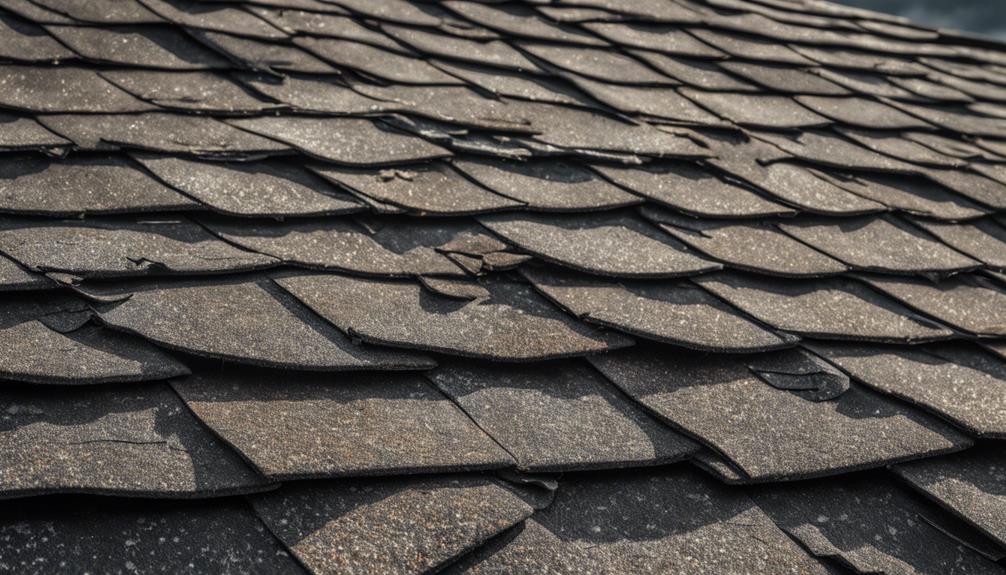
Keeping a close eye on the impact of weather conditions is crucial for understanding how they affect the longevity of roof shingles. Weather conditions such as extreme heat, heavy rain, and strong winds play a significant role in determining the lifespan of shingles.
Heat exposure can cause shingles to dry out, crack, and lose flexibility, leading to premature replacement. Prolonged exposure to rainwater can result in water damage, mold growth, and shingle deterioration, necessitating timely maintenance. Additionally, high winds can lift and loosen shingles, potentially causing water infiltration and structural damage, highlighting the importance of regular inspections.
Understanding how weather impacts roof shingle lifespan empowers homeowners to plan for necessary maintenance and inspections. By incorporating a proactive approach to monitoring and addressing weather-related wear and tear, homeowners can extend the longevity of their roof and minimize the need for premature replacement. Stay informed, stay proactive, and ensure your roof is well-equipped to withstand various weather conditions.
Cost Considerations for Roof Shingle Replacement
Considering the various factors influencing the cost of roof shingle replacement, it is essential to carefully assess the expenses involved to ensure a well-informed decision-making process. When budgeting for roof shingle replacement, it's crucial to account for material costs, labor charges, disposal fees, and any necessary repairs to the underlying roof structure. Opting for premium shingles may increase the initial replacement cost, but their enhanced durability and longer lifespan can provide cost savings in the long run. Here is a breakdown of typical costs associated with roof shingle replacement:
| Cost Factor | Average Range |
|---|---|
| Material (per sq. ft.) | $3.50 – $5.50 |
| Installation (per sq. ft.) | $2.50 – $4.50 |
| Labor Charges | Varies |
| Disposal Fees | Varies |
Properly budgeting for roof shingle replacement ensures a smooth process and a high-quality result that adds value and longevity to your home. By understanding these cost considerations, homeowners can make informed decisions when planning for roof maintenance and replacement.
Frequently Asked Questions
How Do You Tell if Your Shingles Need Replacing?
When assessing whether shingles require replacement, we look for signs like curling, cracking, or missing shingles. Bald spots indicating wear, granules in gutters, dark patches, algae growth, leaks, or water stains in the attic are also indicators we consider. These signs help us determine the condition of the shingles and if they need attention.
Regular inspections can catch problems early, preventing potential damage to the roof and interior of the home.
How Long Do Shingles Last on a Roof?
We've seen a variety of roof shingles lasting anywhere from 15 to 30 years, with factors like climate and maintenance affecting longevity.
Regular inspections and quick repairs can extend shingle life. Signs of aging like curling or missing granules signal replacement needs.
Replacing shingles at the end of their lifespan maintains home protection. It's crucial to monitor these signs to avoid potential leaks and damage.
How Many Times Can a Roof Be Reshingled?
We need to consider various factors when contemplating how many times a roof can be reshingled.
It's crucial to evaluate the roof's condition, weight limitations, and structural integrity before proceeding with additional reshingling.
Consulting with a professional will provide insight into the feasibility of further reshingling.
Should You Put a New Roof Over Old Shingles?
Putting a new roof over old shingles can cause warranty issues and structural concerns. It's best to remove old shingles before installing new ones for a secure foundation and effective inspection of the roof deck.
While it might seem cost-effective initially, adding layers can lead to premature deterioration and increased long-term expenses. Opting for a fresh installation ensures better energy efficiency and reduces the risk of future roofing problems.
Conclusion
In conclusion, it's always a good idea to keep an eye on the condition of your roof shingles and address any issues promptly.
Remember, regular maintenance and inspections can help prolong the lifespan of your roof and save you money in the long run.
So, when the time comes to bid farewell to your old shingles, consider it as an opportunity to give your home a fresh new look.
- About the Author
- Latest Posts
Introducing Ron, the home decor aficionado at ByRetreat, whose passion for creating beautiful and inviting spaces is at the heart of his work. With his deep knowledge of home decor and his innate sense of style, Ron brings a wealth of expertise and a keen eye for detail to the ByRetreat team.
Ron’s love for home decor goes beyond aesthetics; he understands that our surroundings play a significant role in our overall well-being and productivity. With this in mind, Ron is dedicated to transforming remote workspaces into havens of comfort, functionality, and beauty.
-

 Vetted1 day ago
Vetted1 day ago15 Best Printers of 2024: Top Picks and Expert Reviews
-

 Vetted3 days ago
Vetted3 days ago15 Best Tile Sealers for Long-Lasting Protection and Shine
-

 Vetted1 week ago
Vetted1 week ago15 Best Smelling Floor Cleaners That Will Leave Your Home Fresh and Inviting
-

 Vetted5 days ago
Vetted5 days ago14 Best Power Scrubbers for Showers That Will Transform Your Cleaning Routine
-

 Mardi Gras Decoration5 hours ago
Mardi Gras Decoration5 hours agoWhat Do the Symbols of Mardi Gras Mean?
-

 Appliances3 days ago
Appliances3 days ago5 Best Energy-Efficient Stainless Steel Fridges 2023
-
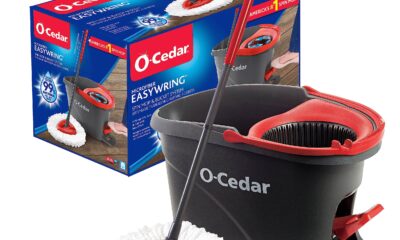
 Vetted4 weeks ago
Vetted4 weeks agoBest Mop for Sparkling Clean Floors in 2024
-
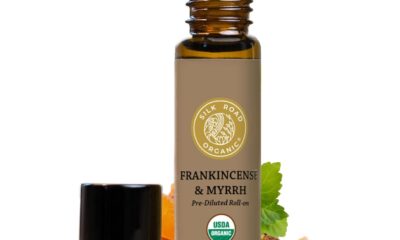
 Vetted3 days ago
Vetted3 days agoBest Essential Oil Brand: Top Picks for 2024




